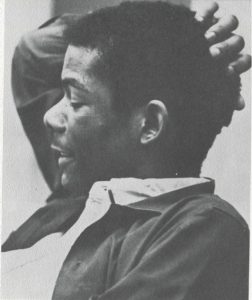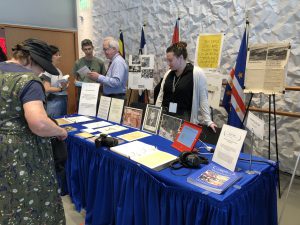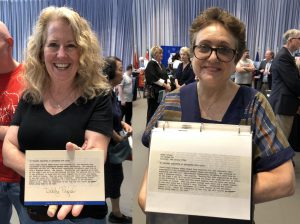Even as we move into November, I would like to return to October. Many may know it as a month of horror movies, candy, and spooky decorations, but it also happens to be Lesbian, Gay, Bisexual, and Transgender History month.
I originally intended to highlight stories about LGBT+ volunteers serving in the Peace Corps—the only issue is that donors do not usually disclose their sexual orientation or gender identity when offering their materials to the PCCA. However, we do have some items related to heterosexual couples and marriage during Peace Corps service. You can view the corresponding blogs here and here.
Since the PCCA is home to personal collections for over 200 Returned Peace Corps Volunteers (RCPVs), I have reason to believe that at least a few identify within the LGBT+ community. Yet, even if I were to find traces of homosexuality or transgender experiences, it feels unethical to disclose personal information without the donor’s permission.
That said, I poked around online and found quite a few Peace Corps groups that offered guidance and support to LGBT+ volunteers, as well as blog posts written by LGBT RPCVs.

The Princess Diaries 2: Royal Engagement, 2004.
In this belated LGBT+ history month post, I want to formally request Lesbian, Gay, Bisexual, Transgender, Queer, and Asexual RPCVs (From 1961 to present-day) to consider donating their materials to the PCCA so that we can represent a vast array of PCV experiences.
I would also like to emphasize the incredible work of Jim Kelly and the Lesbian, Gay, Bisexual, Transgender Returned Peace Corps Volunteer Association, while touching on the milestones of LGBT+ Peace Corps history.
A Brief LGBT+ History of the Peace Corps
In many countries around the world, identifying openly (or “coming out of the closet”) as gay, lesbian, bisexual, or transgender is illegal. In others—including the United States— LGBT+ continue to face discrimination, violence, and even death. Those who appear to fit into the heterosexual societal expectations of gender and sexuality incur the trauma of loneliness and shame from the lack of recognition and acceptance for who they are. LGBT+ Peace Corps Volunteers often have to choose between the call to “promote world peace and friendship” and their own mental or physical health.
When Kennedy created the Peace Corps in 1961, the organization’s stance on homosexuality corresponded with that of the United States federal government. During the 1950s and ‘60s, the United States collectively feared Communist spies. Government agencies rooted out potential security breaches, focusing largely on anyone suspected of being a homosexual.
In this cultural environment, RCPV Jim Kelly applied for the Peace Corps. Kelly recounts the application process and facing the survey question: “Are you a homosexual?”
For a young gay man in the 1960s, his only option was to commit perjury—and convince all of his friends to lie as well. While he enjoyed his service in El Salvador, Kelly mentioned feeling anxious of discovery and lonely for a community supportive of his true self.
Listen to Kelly’s 2017 interview at OUTSpoken in Chicago:
Fast forward to 1992, Kelly completed a master’s thesis called “Hidden dimensions of diversity: gays and lesbians in the Peace Corps,” where he interviewed 80 RPCVs and recommended widespread institutional changes to the Peace Corps. Kelly’s study was foundational to initiating worldwide conversations around sexual orientation and gender identity within the organization.
The National Peace Corps Association currently encourages LGBT+ applicants and same-sex couples to serve abroad. Considerably more resources and support systems are available to volunteers during their time overseas, however individual experiences vary depending on the person and social climate of the country. Presently, the Peace Corps reports 18 countries with medical clearances to support HIV+ volunteers and allows applicants to choose specific countries of service.
Do you identify as a LGBTQ+ Peace Corps Volunteer? The PCCA is interested in preserving your materials and understanding how your identities shaped your service. We accept both digital and physical blogs, journals, correspondence, videos, photographs, training materials, and more! Reach out to us at archives@american.edu.



